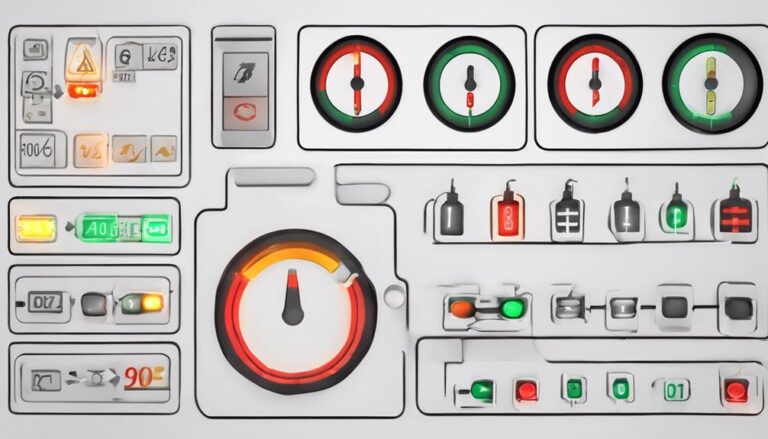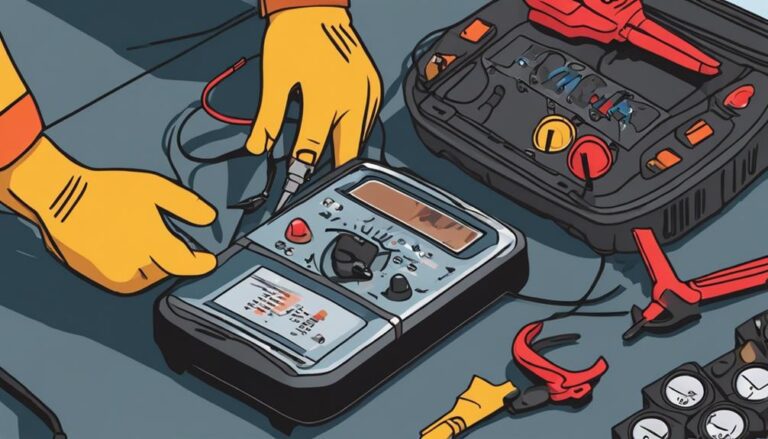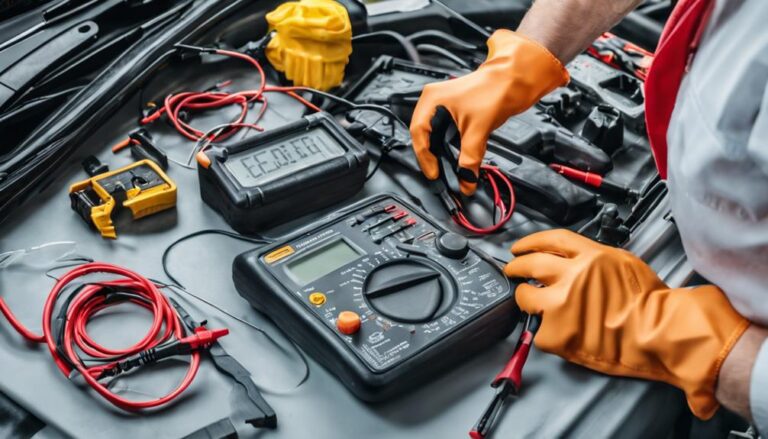Top Car Battery Health Check Tips for You
When it comes to keeping your car battery in top shape, think of it as the heart of your vehicle, needing regular check-ups to ensure smooth operation.
But what if there were a few key tips that could make all the difference in maintaining its health? Let's explore some expert insights that could save you from unexpected troubles on the road and help you make the most out of your car battery's lifespan.
Key Takeaways
- Regular testing ensures optimal performance and prevents unexpected breakdowns.
- Signs of a failing battery include dim headlights and difficulty starting the engine.
- Proper maintenance like checking electrolyte levels and keeping terminals clean extends battery lifespan.
- Test battery voltage with a multimeter and consider replacement if voltage is consistently low.
Importance of Regular Battery Testing
Regularly testing your car battery is essential to proactively identify potential issues and ensure optimal performance of your vehicle's electrical system. Battery diagnostics play a crucial role in preventing unexpected breakdowns by detecting any underlying problems early on.
By incorporating preventative measures such as routine testing, you can verify that your battery is holding a proper charge, which is vital for the smooth starting of your vehicle. Monitoring the health of your battery through regular testing not only extends its lifespan but also helps you avoid the inconvenience and cost of premature replacements.
Moreover, these tests enable you to assess the overall condition of the electrical system in your car, ensuring that it functions at its best. Understanding the significance of regular battery testing empowers you to take control of your vehicle's maintenance, saving you valuable time and money by addressing any potential issues before they escalate.
Signs of a Failing Battery
Frequent signs of a failing battery include dim headlights, slow power windows, a struggling starter motor, difficulty starting the engine, and changes in engine sound at idle, such as rough idling. These common symptoms can indicate underlying issues with your car battery. To help you better understand these signs, here are some troubleshooting steps to consider:
| Common Symptoms | Troubleshooting Steps |
|---|---|
| Dim Headlights | Check for loose connections or a discharged battery. |
| Slow Power Windows | Test the battery voltage and inspect for corrosion. |
| Struggling Starter Motor | Assess the battery terminals and the starter system. |
| Difficulty Starting Engine | Look for signs of battery leakage or sulfation buildup. |
| Changes in Engine Sound | Examine the alternator and battery for proper function. |
Proper Battery Maintenance Practices
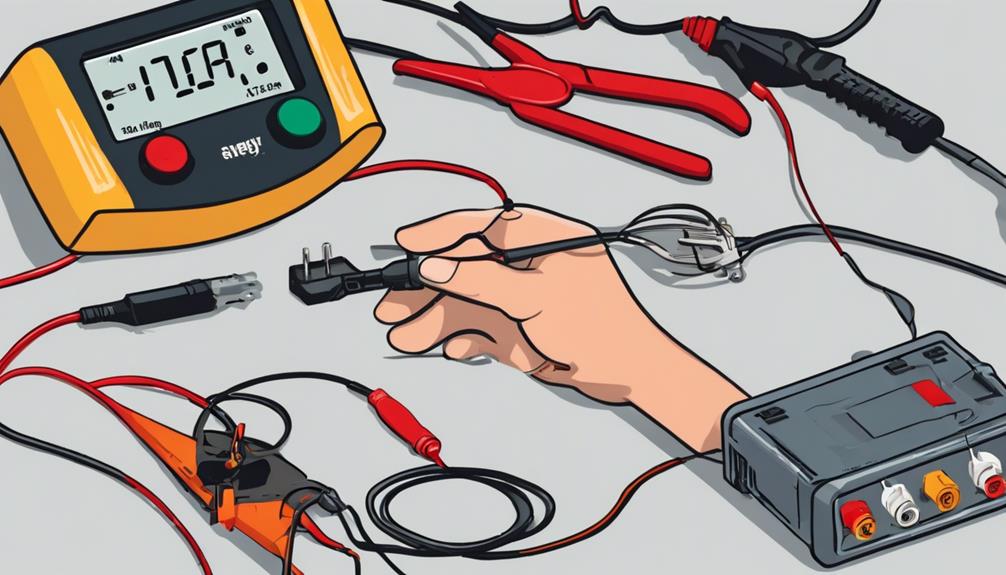
To ensure optimal performance and longevity of your car battery, it's essential to adhere to proper maintenance practices. Regularly check and maintain electrolyte levels to guarantee they cover the lead plates in all battery cells. If the lead plates are exposed in maintainable batteries, use distilled water to top up the electrolyte levels.
For maintenance-free batteries, monitor the State of Charge Indicator for low electrolyte levels that may necessitate replacement. Recharge the battery every 3 months with a suitable charger to uphold peak performance and battery health.
Additionally, keep the battery clean by ensuring the top and terminals are free from corrosion. This practice will help extend the battery's service life and ensure it functions efficiently. By following these simple yet crucial maintenance steps, you can significantly increase the reliability and durability of your car battery.
How to Test Battery Voltage
To accurately determine the voltage of your car battery, ensure all ignition and accessories are turned off. Use a multimeter set to 20V DC with the red lead on the positive terminal and the black lead on the negative terminal for a precise reading.
This testing procedure is crucial for maintaining voltage accuracy and assessing the health of your battery. A voltage reading below 12.4V may signal the need for charging to sustain optimal battery health.
Monitoring voltage during cranking is also essential. A voltage drop below 9.6V during this process could indicate that the battery requires attention.
By following these steps and understanding the testing procedure, you can effectively evaluate your battery's condition and take necessary actions to ensure its longevity and performance.
When to Consider Battery Replacement
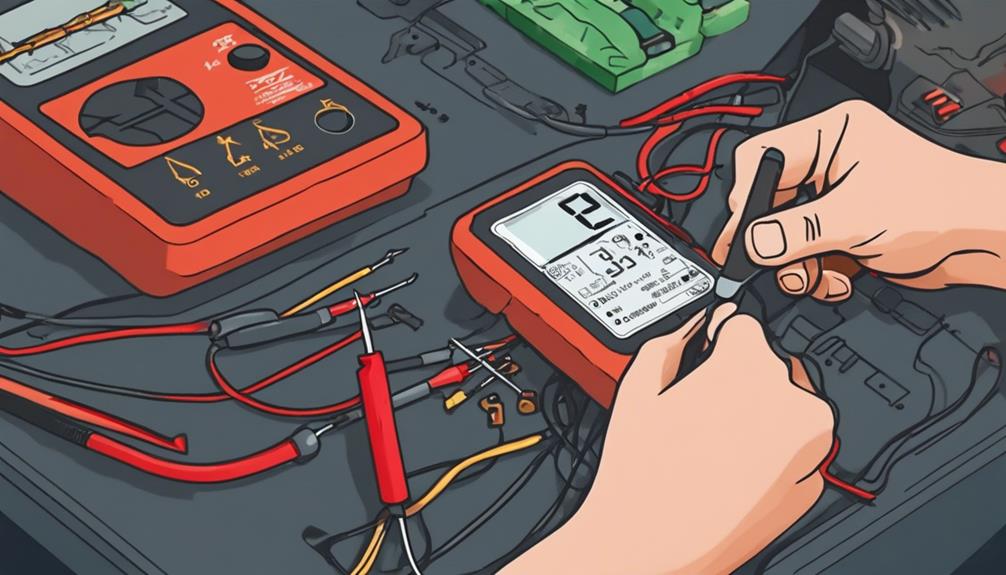
Considering battery replacement becomes necessary when voltage levels drop below critical thresholds during testing, indicating potential issues with the battery's health and performance.
Battery longevity and performance are crucial for your vehicle's operation. Here are key factors to keep in mind:
- Voltage Levels: If the voltage drops below 12.4V during testing, it might be time to replace the battery to ensure optimal performance.
- Cranking Voltage: Replacement may be necessary if the cranking voltage drops below 9.6V, affecting the starting capability of your car.
- Age and Maintenance: The age of the battery and its maintenance history play significant roles in determining when to replace it. Regular maintenance can prolong battery life and prevent sudden failures.
Diminished performance, such as slow cranking or dim lights, can be indicators of a failing battery. Seeking professional testing and advice can help you accurately assess the need for battery replacement, ensuring your vehicle runs smoothly.
Frequently Asked Questions
How Can I Check the Health of My Car Battery?
To check your car battery health, start with a voltage reading to ensure it falls within 12.4-12.7 volts. Consider load testing to assess its performance under stress. These steps can help you gauge the overall condition of your battery.
What Is the Most Accurate Way to Test a Car Battery?
To test a car battery accurately, use a voltmeter for a voltage test. Ensure it reads 12.4-12.7 volts for health. Consider a load test for a thorough check. Check electrolyte level and corrosion. Address high voltage readings promptly.
How Do I Make Sure My Car Battery Is Good?
To ensure your car battery is good, start by checking the voltage reading with a voltmeter. Maintain battery health through regular tests and professional advice if needed. Remember, a healthy battery voltage falls within 12.4-12.7 volts range.
How Can I Check the Quality of My Car Battery?
To check your car battery's quality, measure its voltage reading with a multimeter. Perform load testing during cranking to ensure it stays above 9.6 volts. Maintain proper electrolyte levels, clean terminals, and recharge regularly for optimal performance.
Conclusion
In conclusion, maintaining the health of your car battery is crucial for optimal performance. Have you considered the impact of regular testing and proper maintenance on extending the lifespan of your battery?
By following these top car battery health check tips, you can ensure your vehicle stays reliable and efficient. So, when will you start implementing these practices to keep your battery in top condition?




